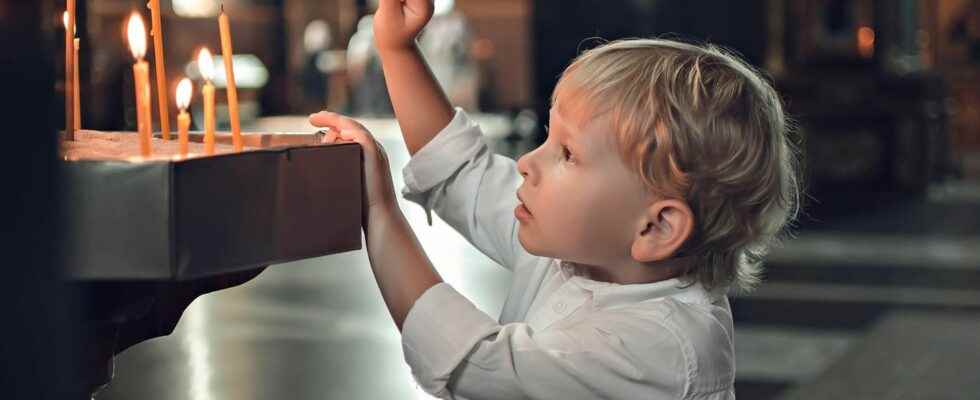what to do when
The SOS guideline for burns in Advent
© kazakova0684 / Adobe Stock
Whether it’s from a candle, hot tea or while baking cookies – burns in Advent happen quickly. We have the most important tips for burns and explain how you can prevent them.
As beautiful as the Advent season is, it is unfortunately also dangerous for young and old. The risk of burns and scalds increases at this time of year. No wonder – when it gets cold outside, we long for candles and hot drinks like tea or cocoa. In particular, small children under the age of five are not yet good at assessing danger and can easily burn themselves on hot liquids or candlelight. That’s why it’s important to be careful. While many injuries are often harmless, it’s good to know what to do with burns.
If there is a fire: Is it better to extinguish it with a blanket or cold water?
Advent wreaths in particular can suddenly start to burn quickly when the needles become dry and the candles burn down. The best way to be prepared for such a situation is to keep a bucket of cold water and a cleaning rag within reach. In the worst case, you can react quickly. Small flames can be smothered with a wet cloth in the first few seconds. Fire blankets and small fire extinguishers are particularly recommended.
Fires that start in the kitchen, for example oil or fat in the pan, should never be extinguished with water. Either smother the flame with the pan lid or with a damp kitchen towel, blanket, or jacket.
First aid and tips against burns
If you have burned yourself on the stove or a candle, the question arises: which is correct? Cool with cold water or not? Small burns are best held under the tap and immediately cooled with running tap water at room temperature for 10 minutes. Tip: A small area is roughly the size of the affected person’s palm. However, it only has a pain-relieving effect if it is flushed with water immediately. Afterwards, moist compresses and burn ointments can help, promoting healing and reducing swelling.
To avoid hypothermia, it is best not to use cool packs or ice cubes, and cooling the burned area should be limited in time. If the face is affected, damp cloths are good for cooling. Here it is best to ensure that the airways remain free. After cooling, you can cover the wound with a loose and germ-free bandage.
In general, it is not recommended to use home remedies and to open the burn blisters in the case of burns. Scald or burned clothing should be removed quickly (but carefully).
This is how you can tell if there is a burn
- First Degree Burn: There is reddening of the skin, discrete swelling and slight pain. The wound heals without scars and consequences.
- 2nd degree burn: Skin reddening and blisters appear. The result is severe pain and the burn rarely heals without scars.
- Third degree burn: Grey, white or black skin forms, and the burned areas of skin no longer feel pain because the nerve cells in the skin have been destroyed. The type of burn only heals with scarring, large wounds have to be closed with plastic surgical skin grafts.
When can you treat a burn yourself and when should you see a doctor?
Even minor burns and scalds in children should always be examined by a doctor. First degree burns as well as single burn blisters can be treated at home. If you’re not sure if the burns are only first-degree, you can call emergency services. For second-degree burns, you should see a doctor as soon as possible. Third degree burns must be treated immediately by a doctor. In general, if more than 10 percent of the body surface is affected, inpatient treatment is usually required.
This way you can avoid burns (especially in children).
With children in the Advent season, delicate burn situations quickly arise. To avoid getting burned, place cups of hot beverages in the center of the table out of the reach of small children. You can also do without hanging tablecloths and preferably not drink anything hot while holding a child in your arms or sitting on your lap.
You should always keep an eye on children around an open fire. And try to make sure to change candles in time before they burn down completely. When you leave the room, always put out all the candles. Worth it. to be careful with fire and to be a good role model for children. After all, bans often arouse curiosity. That’s why it’s best to educate your child about the dangers instead. In addition, only older children should use lighters or matches under supervision. Preferably you decorate the Christmas tree with fairy lights instead of real candles and place the Advent wreath so that the children cannot get to it.
Even hot-water bottles can lead to slight scalding in the cold season. Try not to fill the bottle up with boiling water. In the kitchen, it is best to make sure that you cook on the back burners. If possible, position pot or pan handles toward the wall and attach a child safety gate to the front of the stove.
Sources used: drk.de, pediatricians online, gesundheit.gv.at., gesundheitsstadt-berlin.de and apotheke.de

